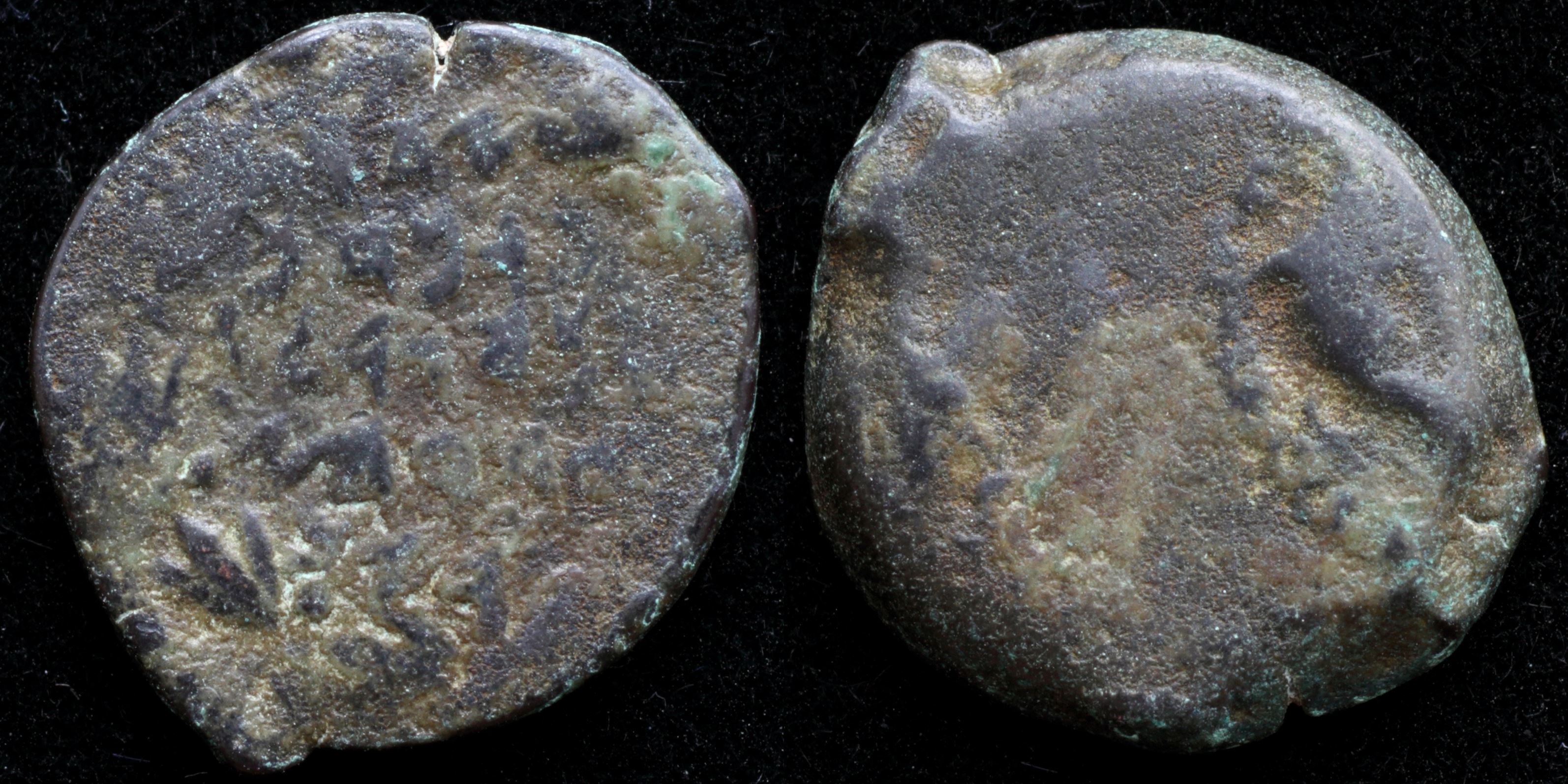The coinage of Alexander Jannaeus is characteristic of the early Jewish coinage in that it avoided human or animal representations, in opposition to the surrounding Greek, and later Roman types of the period. Jewish coinage instead focused on symbols, either natural, such as the palm tree, the pomegranate or the star, or man-made, such as the Temple, the Menorah, trumpets or cornucopia.
Alexander Jannaeus was the first of the Jewish kings to introduce the "eight-ray star" or "eight-spoked wheel" symbol, in his bronze "Widow's mite" coins, in combination with the widespread Seleucid numismatic symbol of the anchor. Depending on the make, the star symbol can be shown with straight spokes connected to the outside circle, in a style rather indicative of a wheel. On others, the spokes can have a more "flame-like" shape, more indicative of the representation of a star within a diadem.
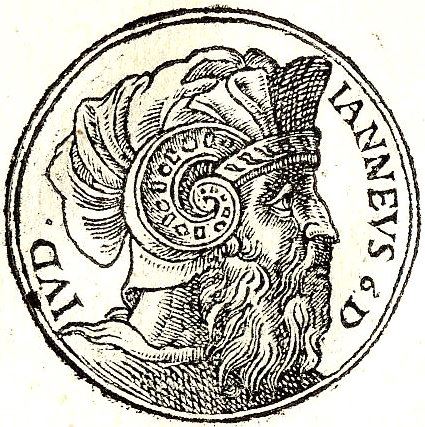
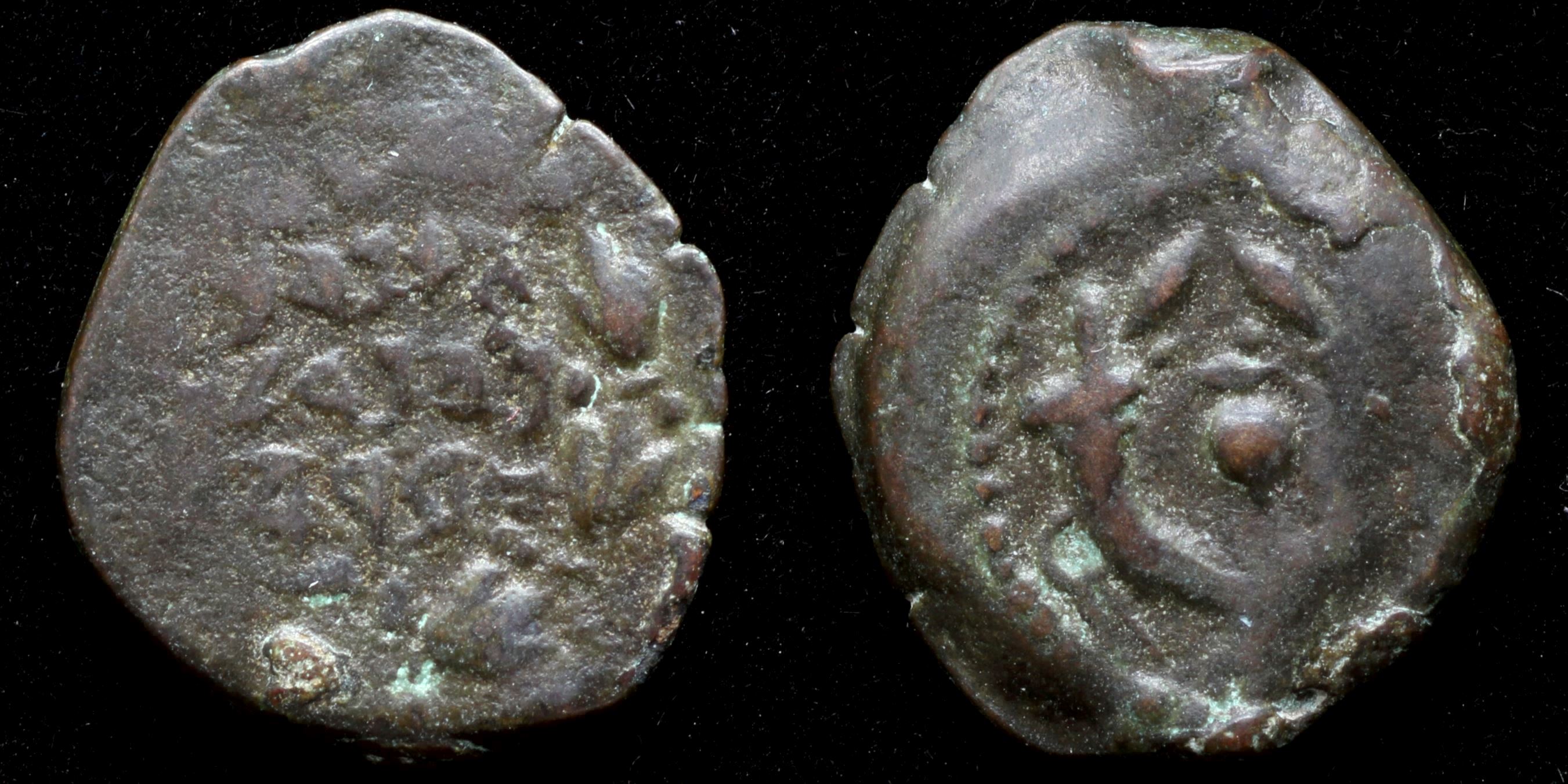
Reverse: double cornucopia adorned with ribbons, pomegranate between horns
Die Orientation: -
Weight: 2.1 g

Reverse: Seleucid anchor; BAΣIΛEΩΣ AΛEΞANΔPOY
Die Orientation: -
Weight: 0.67 g
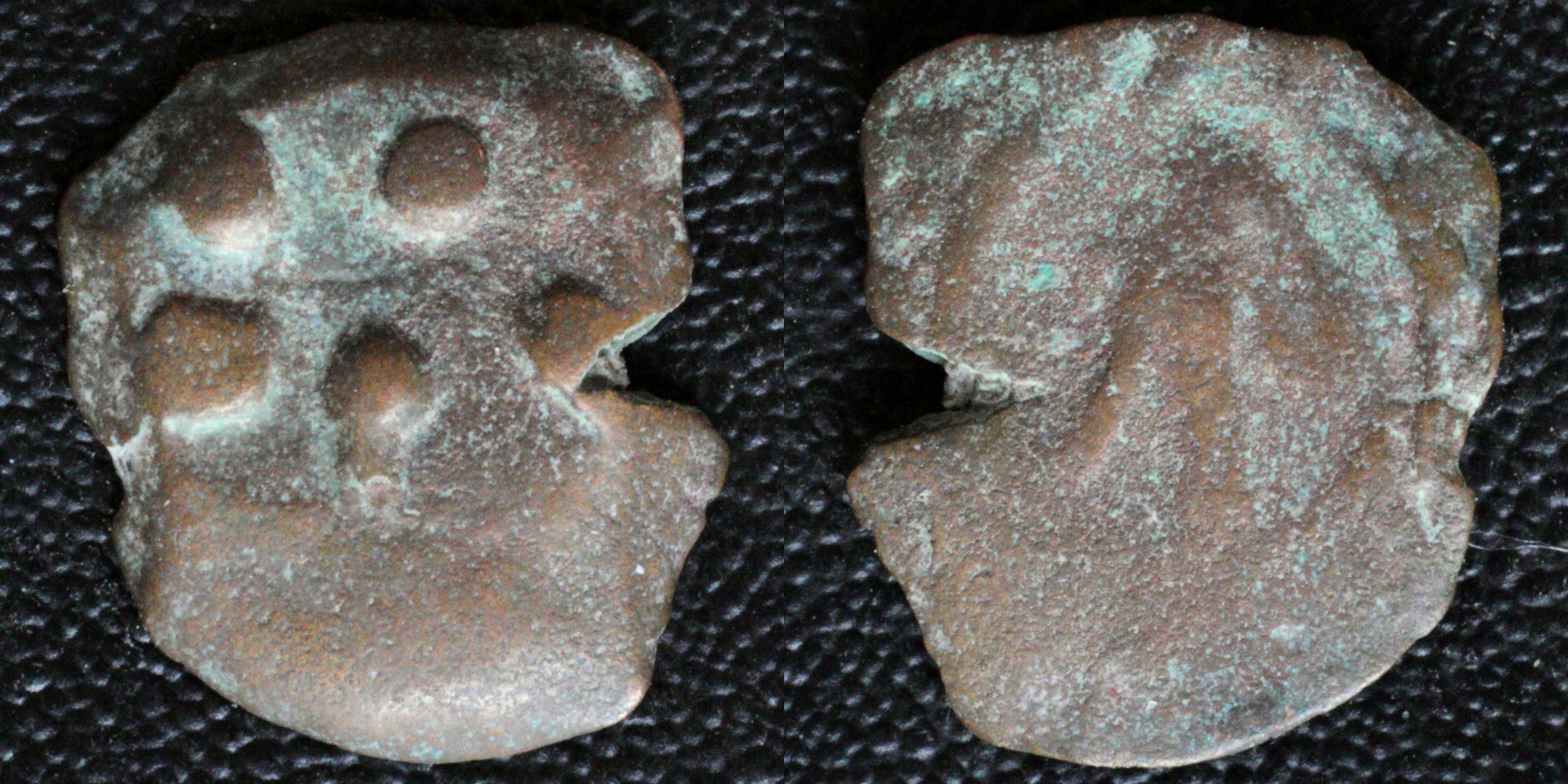
Reverse: Anchor in circle, BAΣIΛEΩΣ AΛEΞANΔPOY
Die Orientation: -
Weight: 0.71 g
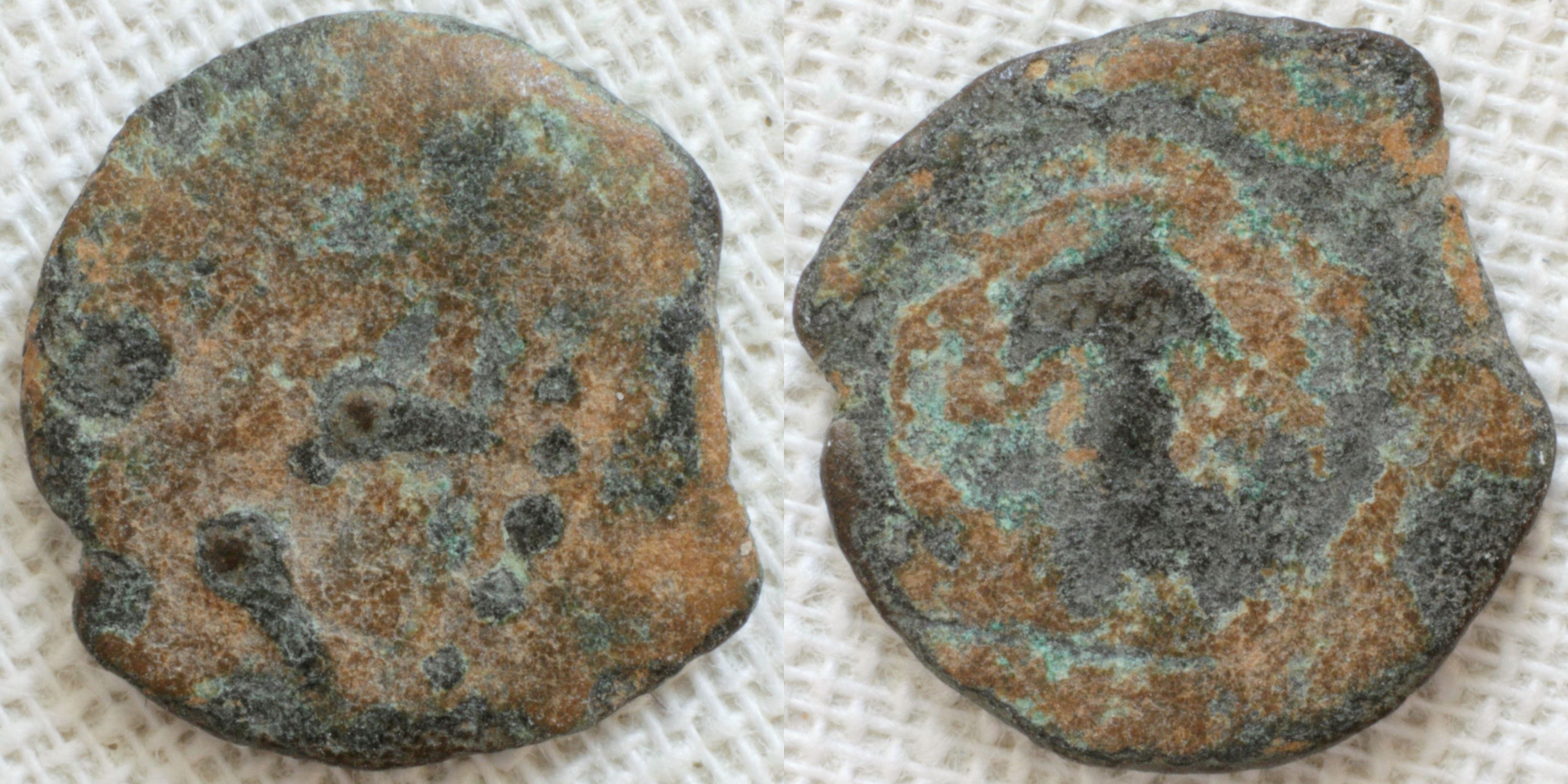
Reverse: Anchor in circle; BAΣIΛEΩΣ AΛEΞANΔPOY
Die Orientation: -
Weight: 0.6 g
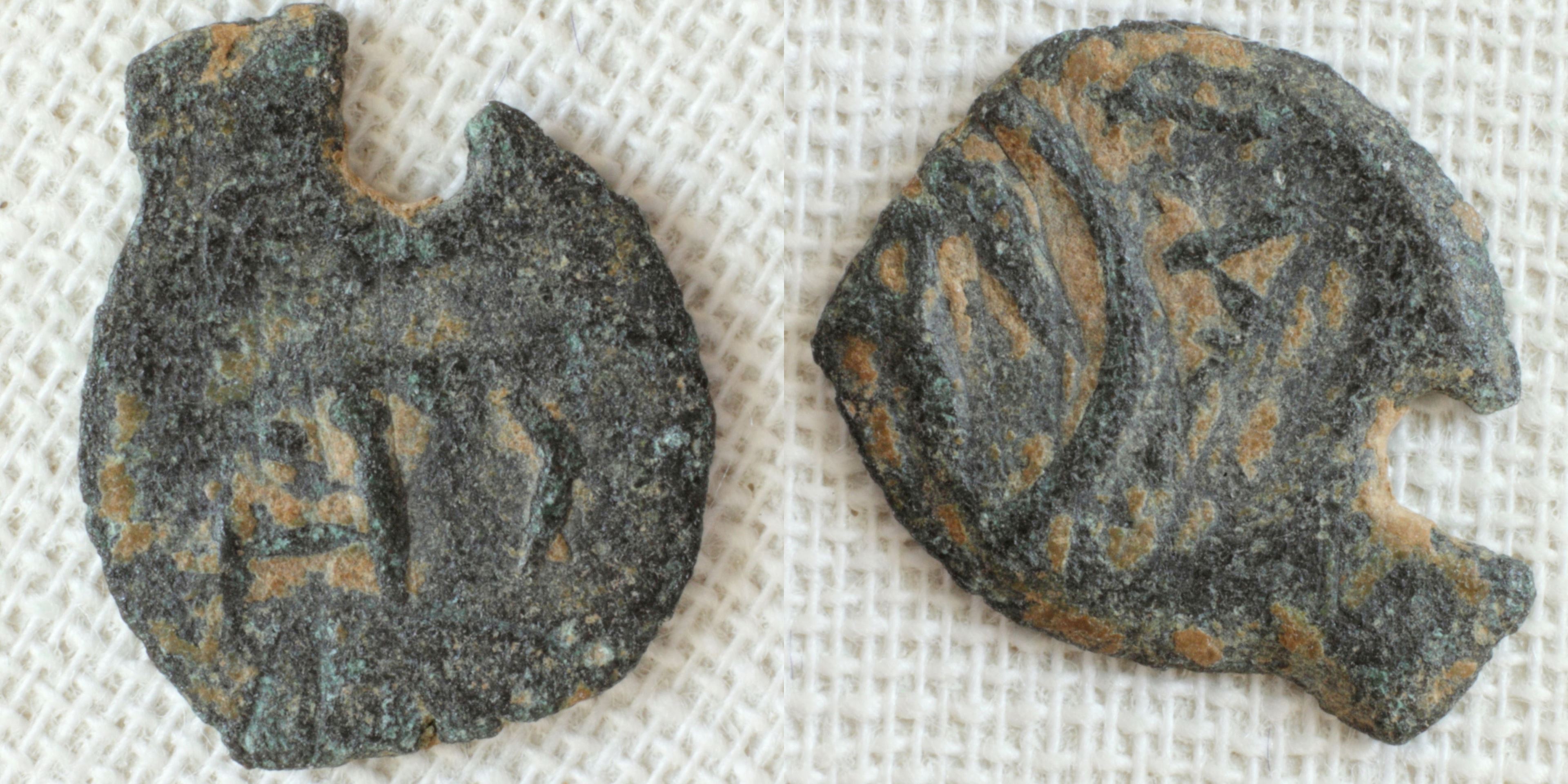
Reverse: Anchor within circle blundered barbaric imitation of Greek legend around
Die Orientation: -
Weight: 0.54 g
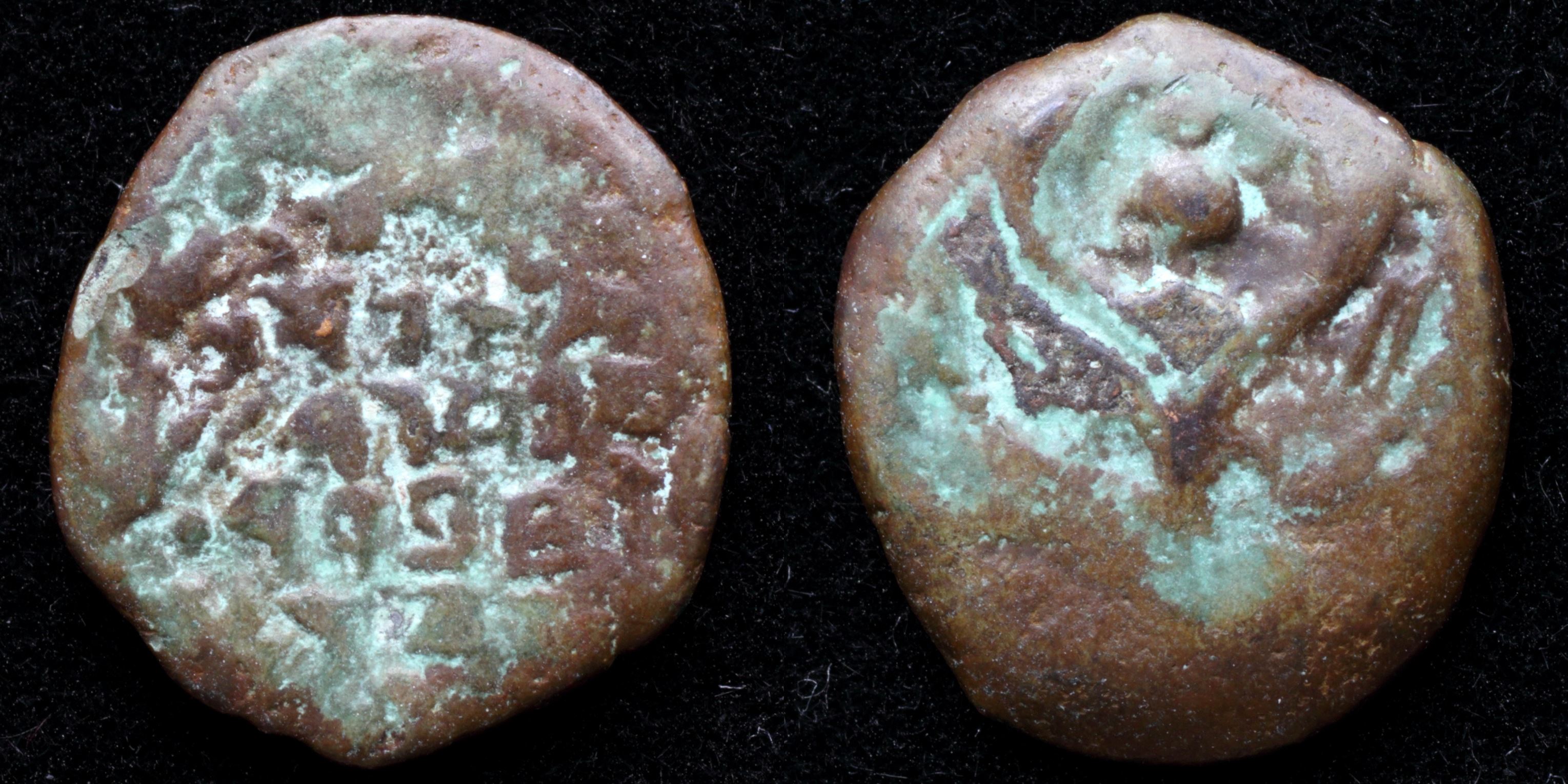
Reverse: double cornucopia adorned with ribbons, pomegranate between horns
Die Orientation: -
Weight: 1.4 g
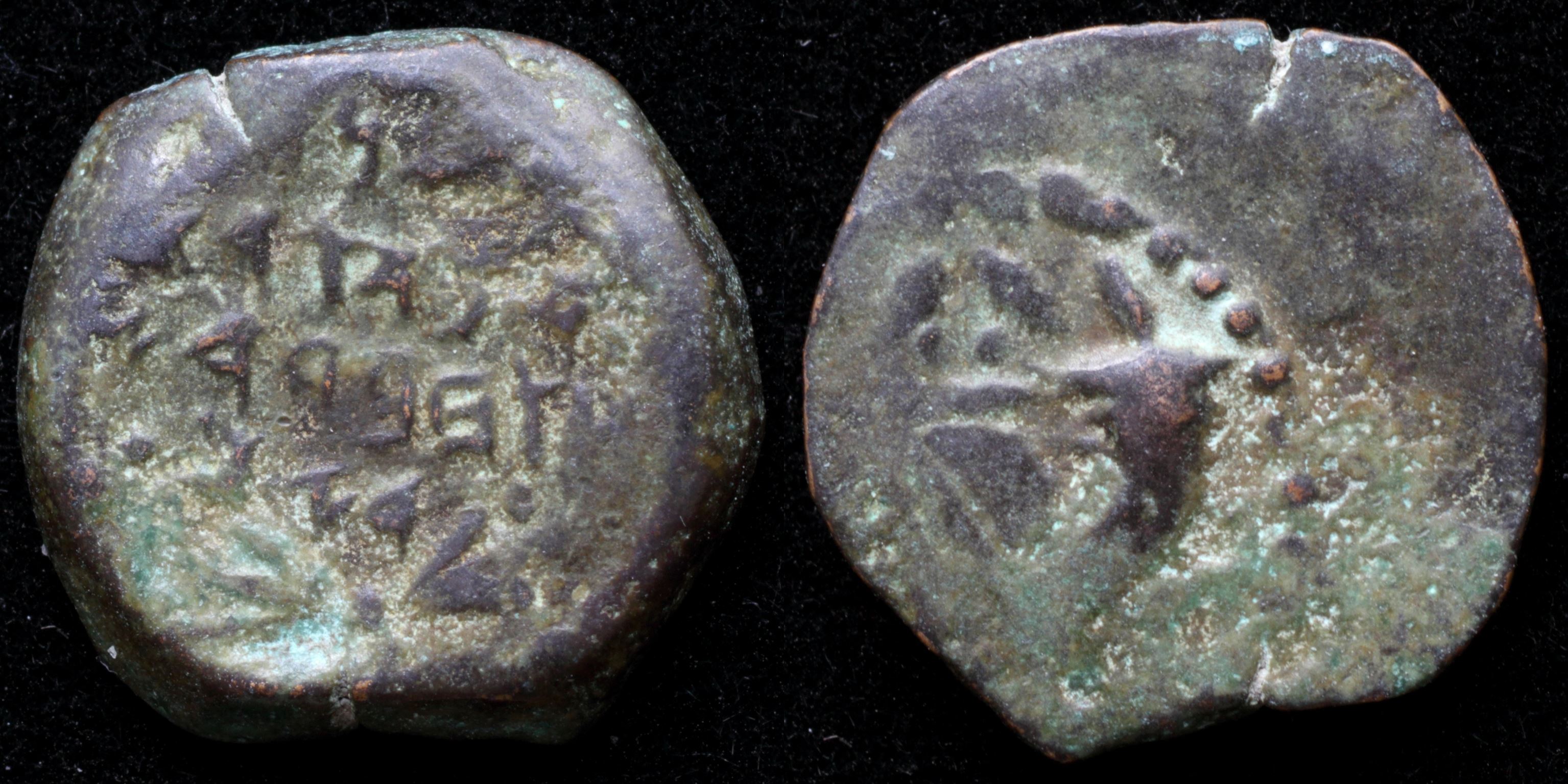
Reverse: double cornucopia adorned with ribbons, pomegranate between horns
Die Orientation: -
Weight: 2.3 g

